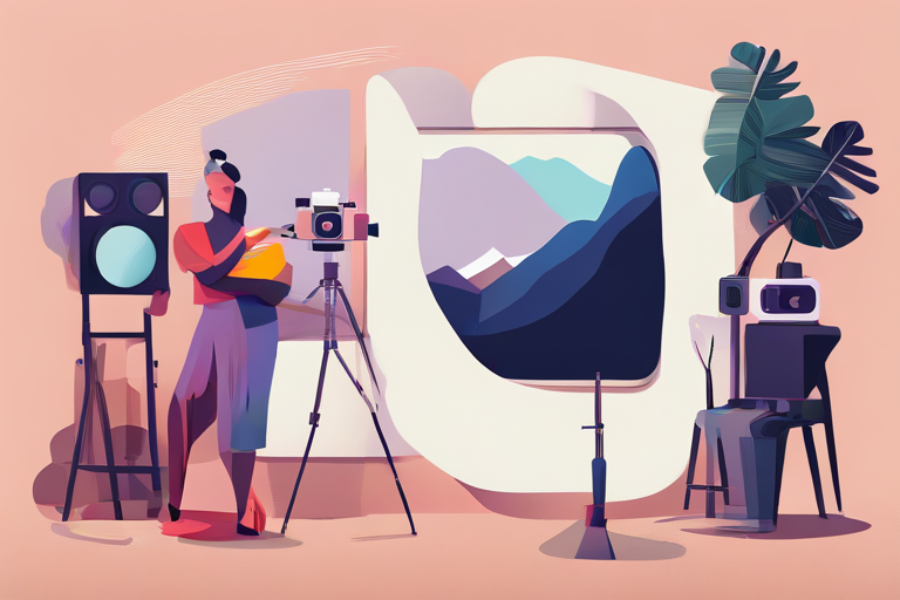Kinetic art, another name for art in motion, refers to works of art in which movement is the main theme. Dynamic and constantly shifting, kinetic art can take many forms, from captivating sculptures to interactive installations, and it draws in audiences.
Learning Motion Art
The Idea of Kinetic Art
The study of kinetic art questions conventional ideas of static form by looking at the relationship between art and motion. Artists employ various mechanisms to create works of art that show motion, oscillation, or environmental response.
The Past and the Present
The early 20th century saw the emergence of kinetic art, as artists such as Marcel Duchamp and Alexander Calder experimented with movement in their sculptures. With the adoption of novel materials and technologies, kinetic art has developed into a multifaceted and creative discipline over time.
Types of Motion Pictures

There are many different types of kinetic art, such as interactive installations, motorized sculptures, and mobiles. Every kind presents different chances for artistic expression and audience participation.
Illustrations of Moving Art
Famous kinetic art installations
Global audiences have been fascinated with kinetic art installations, like the interactive light sculptures by Olafur Eliasson and the satirical “Homage to New York” by Jean Tinguely. Viewers of these enormous works are allowed to experience movement in a physical setting.
Famous Artists and Their Creations
Through their creations, artists such as Yaacov Agam, Lygia Clark, and Theo Jansen have expanded the potential of kinetic art. Their works challenge our perceptions of time and space and compel us to explore uncharted creative territories.
Moving Art’s Impact
Impacts on Psychology and Emotion
Kinetic art evokes a range of emotions, such as wonder and awe, as well as contemplation and introspection. Engaging with dynamic artworks takes viewers to a new world of sensory experience and imaginative exploration.
Impact on Contemporary Culture
Kinetic art has an influence on popular culture, architecture, and design even outside the realm of fine art. From dynamic sculptures in public spaces to interactive museum installations, art in motion continues to influence our sense of aesthetics and social interactions in a variety of settings.
Creating Motion Picture Art
Techniques and Tools

Artists employ a variety of techniques and tools, including mechanical devices, electronic sensors, and digital programming, to bring their ideas to life. These tools provide artists with new and unexpected ways to manipulate movement.
Challenges and Innovations
Despite the unique aesthetic and technical challenges presented by kinetic art, artists never stop pushing the boundaries. Even though kinetic art poses particular artistic and technical difficulties, creators never stop pushing the envelope. Technological, material, and fabrication advances have opened up new avenues for artistic expression and experimentation.
Gratifying Moving Art
Engaging Audiences and Interactivity
The capacity of kinetic art to captivate audiences on a sensory and experiential level is one of its distinguishing characteristics. Art in motion encourages viewers to actively participate in the creative process, whether through interactive installations or participatory performances.
Analysis and Interpretation of Artistic Work
Kinetic art, like all art, is open to interpretation and criticism, igniting discussions about society, technology, and aesthetics. Viewers are invited to consider the connection between art, technology, and the human experience by interacting with kinetic artworks.
Upcoming Trends in Motion Art
Technological Progress
Innovations in digital fabrication, robotics, and artificial intelligence are influencing the direction of kinetic art. By using these new tools, artists are able to produce more intricate and immersive works of art that challenge our expectations of reality.
Combining Virtual Reality with Integration
Future art in motion has a lot of exciting possibilities thanks to the integration of virtual reality (VR) technology. Artists are able to produce interactive environments that conflate the virtual and real worlds by fusing digital and physical components.
FAQs
What relevance does kinetic art have?
- Viewers are invited to engage in a dynamic and interactive experience with art through kinetic art, which questions conventional ideas of static form.
What impact does moving art have on modern art?
- Art in motion has had a significant influence on contemporary art, inspiring artists to try out new mediums and audience engagement strategies.
Which well-known kinetic art installations exist?
- Renowned instances of dynamic art installations are the light sculptures by Olafur Eliasson and Jean Tinguely’s “Homage to New York.”
What are some ways that artists can use motion in their artwork?
- Using electronic sensors, digital programming, and mechanical devices, artists can add motion to their works of art.
What alteration has technology made to the evolution of moving art?
- Technology has played a major role in the development of art in motion, enabling artists to create ever-more complex and immersive works of art.
How does moving art captivate viewers?
- By allowing viewers to interact with the artwork on a visceral and sensory level, art in motion engages viewers.
Conclusion
“Art in Motion” is an ever-evolving and dynamic field that pushes the boundaries of artistic expression. From its historical roots to future trends, kinetic art offers a rich tapestry of creativity, innovation, and exploration. Using kinetic art, sometimes referred to as art in motion, allows spectators to see how the piece defies expectations by making movement an integral part of the piece. The dynamic appeal of kinetic art, which showcases everything from intricate mechanical motions to subtle oscillations, captivates audiences.

